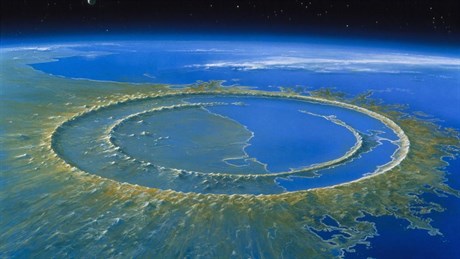Dr. Zenon Medina-Cetina, associate professor in the Zachry Department of Civil Engineering at Texas A&M University, presented to high school teachers regarding hazard assessment of natural threats during the European Geosciences Union’s (EGU) annual Geosciences Information for Teachers (GIFT) Americas Program.
Every year, hundreds of K-12 teachers and university professors come together for discussion and discovery on natural threats like earthquakes, volcanoes, meteors and other disasters. Since 2003, EGU has hosted the annual GIFT Americas Program.
This year EGU-GIFT celebrated its third meeting in Merida Yucatan, Mexico. The event focused on the recent discoveries of the International Oceanographic Drilling Program (IODP) in the Chicxulub Crater located in the northern region of Yucatan, Mexico.
The EGU-GIFT program is designed for top-level scientists studying natural threats to make presentations to K-12 teachers who have been awarded scholarships to attend. The event is a mutual opportunity for the researchers to share and teachers to update their knowledge in earth sciences and education trends and practices. The workshop has proven to expedite the time it takes for teachers to learn about the new scientific discoveries in earth processes.
Jaime Urrutia-Fucugauchi of the Instituto de Geofisica de la Universidad Nacional Autónoma de México (UNAM) was head of the organizing committee for EGU-GIFT.
Medina-Cetina’s research on Stochastic Geomechanics for Risk Assessment introduced the use of computational particle mechanics to simulate the earth impact of the asteroid that created the Chicxulub crater. This presentation was co-authored by Tam Duong, doctoral student at Texas A&M and a member of the stochastic geomechanics laboratory (SGL).
 Medina-Cetina’s presentation was based on a collaboration between his research group in the SGL at Texas A&M and Urrutia-Fucugauchi’s at UNAM. It focused on simulating realistic scenarios that would reproduce current geological conditions at the Chicxulub crater based on a probabilistic experimental design involving millions of likely impact simulations, which would result in the current geological formation at the Chicxulub crater.
Medina-Cetina’s presentation was based on a collaboration between his research group in the SGL at Texas A&M and Urrutia-Fucugauchi’s at UNAM. It focused on simulating realistic scenarios that would reproduce current geological conditions at the Chicxulub crater based on a probabilistic experimental design involving millions of likely impact simulations, which would result in the current geological formation at the Chicxulub crater.
The objective was to define the likely scenarios that contributed to what is hypothesized to be one of the most significant mass extinctions of life on earth 65 million years ago, as well as to understand the current implications of the impact on climate change and present day geological events.
For more information about the Stochastic Geomechanics Laboratory visit SGL’s website.
For a closer look at the SGL’s impact simulations of the asteroid impact at different angles (simple crater simulations), visit SGL’s YouTube channel.